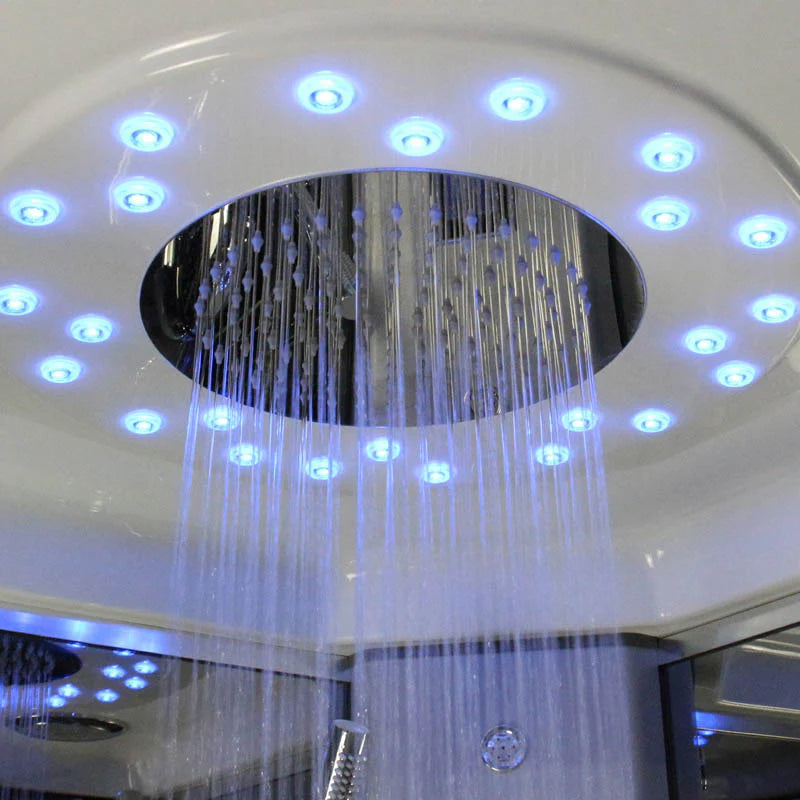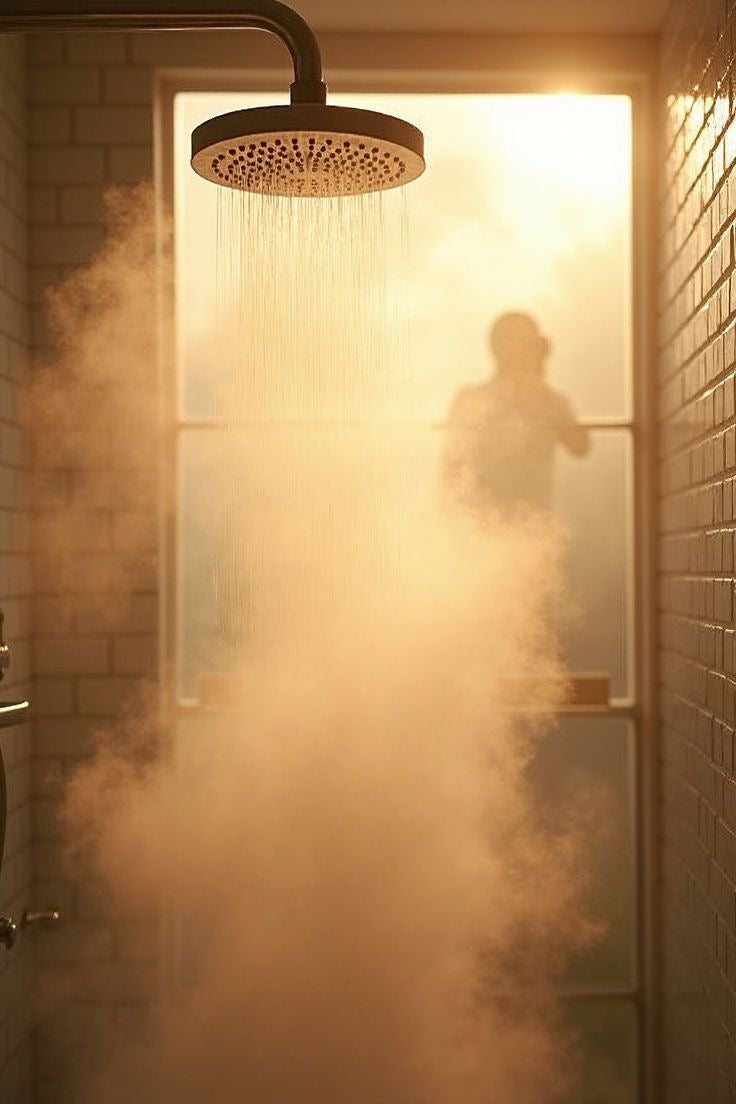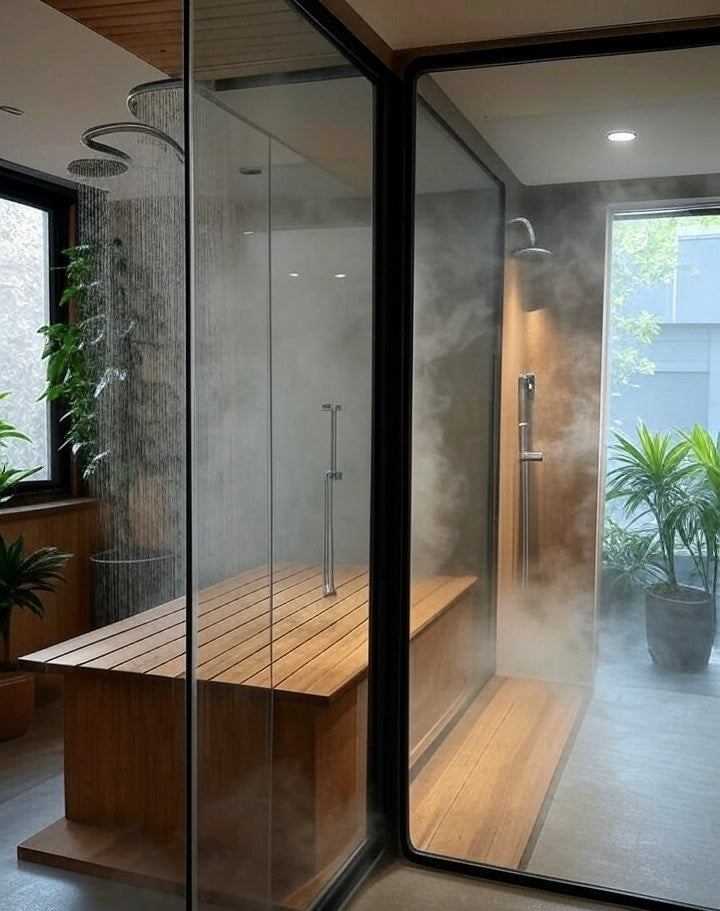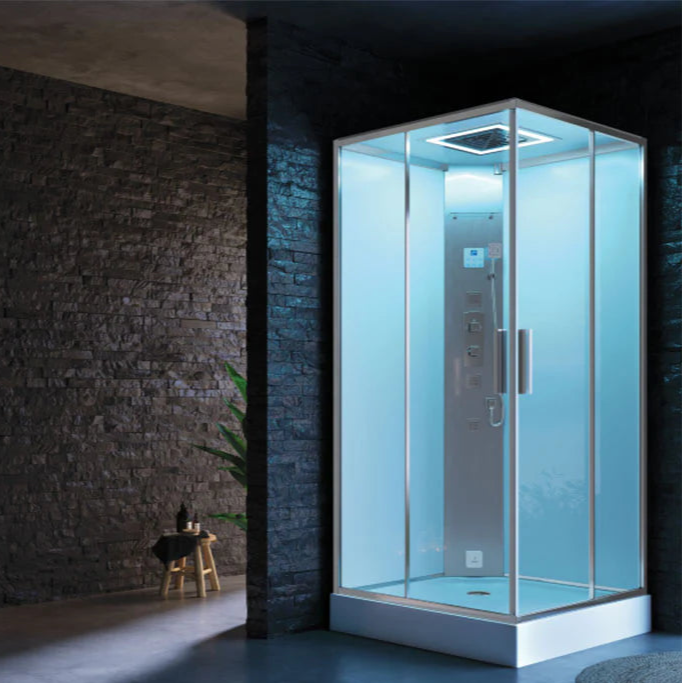Ever felt torn between stepping into a tropical cloud or a dry desert cabin? The short answer: Steam Showers are better for skin and breathing, while Saunas are great for detox and circulation. Want to know which suits you best? Stick around—this Steam Bath vs dry heat face-off is surprisingly fun.

The Fundamental Divide: Moist Heat vs. Dry Heat
Understanding the Core Environmental Differences
Temperature Ranges: The significant disparity in heat
Steam rooms operate at 40–50°C, yet feel hotter due to humidity.
Dry saunas can reach a blazing 70–100°C, but the lack of moisture makes the heat feel more tolerable for some.
The temperature difference changes how your body reacts and how long you can comfortably stay inside.
Humidity Levels: From near-zero to tropical mist
Steam baths deliver 100% humidity, making the air feel thick and warm.
In contrast, dry saunas have 10–20% humidity, which allows sweat to evaporate quickly and cool the body.
The humidity level largely defines the sensory experience in each.
Heat Source and Operation: How each generates its unique environment
Steam showers use a steam generator to heat water and release vapour into a sealed space.
Saunas rely on electric or wood-burning heaters to warm the air and stones.
This creates a dry, radiant warmth that heats the body directly.
Materials and Construction: Why they look and feel different
Steam rooms are built with tiles, acrylic, and glass to contain humidity.
Dry saunas, meanwhile, feature soft wood like cedar or hemlock, which withstands dry heat and adds a natural aroma.
The materials not only change the feel but also influence maintenance and durability.
The Immediate Sensory Experience
How Moist Heat Affects Breathing and Skin
Steam heat opens airways and pores, helping with congestion and skin hydration.
The moist environment can feel heavy at first, but many find it soothing once adjusted.
It’s especially popular among people with respiratory conditions or dry skin.
The Sensation of Dry Heat and Sweating
Dry heat penetrates more deeply and encourages intense sweating.
Sweating happens faster due to the dry air, helping the body release toxins.
Some find the dry warmth more tolerable and calming over longer sessions.
Health & Wellness: Tailored Benefits of Each
Distinct Health Advantages of Steam Showers
Respiratory Relief and Sinus Clearance
Steam rooms excel at clearing sinuses and easing breathing.
Warm mist helps break down mucus and soothe airways, making it ideal for those with colds, allergies, or asthma.
Skin Hydration and Cleansing
Steam baths leave skin feeling moisturised and refreshed.
The humidity hydrates the skin and helps to clear pores naturally.
This makes it a gentle method of facial cleansing without harsh scrubs.
Muscle Relaxation and Joint Flexibility (due to moist heat)
Moist heat helps relax muscles and improve flexibility.
Many athletes use steam therapy to speed up recovery and ease soreness.
It's a soft, full-body way to unwind after physical stress.
Stress Reduction and Mental Relaxation
Steam showers offer a soothing, cocoon-like environment that promotes calm.
The warm mist and quiet space help reduce stress levels and lower cortisol.
A session can feel like a gentle mental reset.
Unique Health Benefits of Dry Saunas
Cardiovascular Health and Circulation Boost
Regular sauna use improves circulation and mimics light cardio for the heart.
It helps the blood vessels expand and reduces blood pressure over time.
This contributes to better heart health and overall vitality.
Deep Detoxification Through Profuse Sweating
Dry heat encourages heavy sweating, flushing out toxins naturally.
Sweating also removes dead skin cells, leaving your body feeling cleaner.
The process feels purifying for both body and mind.
Muscle Recovery and Pain Alleviation
Dry saunas ease muscle soreness and promote recovery post-exercise.
The heat penetrates deeper, relaxing tight tissues and increasing blood flow.
It’s often recommended for people with chronic pain or stiffness.
Mood Enhancement and Cognitive Benefits (e.g., lower risk of dementia)
Studies suggest saunas may improve mental clarity and reduce dementia risk.
Frequent use can lead to better mood regulation, thanks to endorphin release.
A sauna session often leaves you mentally lighter.
Potential for Immune System Support
Saunas may help strengthen your immune defences, particularly during flu season.
Heat exposure increases white blood cell activity, which supports immune response.
This makes it a helpful habit for winter wellness.
Overlapping Benefits and Who Might Prefer Which
Shared Advantages: Relaxation, Stress Relief, Circulation
Both steam and dry heat therapies promote relaxation, improve circulation, and reduce mental tension.
The way they do it just differs—through moist or dry delivery.
Either can become part of a calming wellness routine.
Considerations for Specific Health Conditions (e.g., asthma, heart conditions)
Steam rooms suit people with asthma or sinus issues, thanks to moist air.
Those with heart conditions should consult a GP before using either, especially dry saunas, due to cardiovascular stress.
Your health history can guide the safer choice.
Personal Preference: Your Comfort in Different Environments
Some people enjoy the gentle mist of a steam bath, while others prefer the crisp intensity of a sauna.
It really comes down to how your body and mind respond to each environment.
Trying both can help you decide what fits your lifestyle.
Practical Considerations: Installation, Cost, and Maintenance

Installation Requirements and Complexity
Plumbing and Sealing for Steam Showers
Steam showers need sealed spaces with waterproof tiling and plumbing.
A steam generator must also be installed, usually by a professional.
Condensation control is key to prevent mould and water damage.
Electrical Needs and Ventilation for Both
Both setups require electrical connections, but steam rooms need extra ventilation systems.
Dry saunas must be wired to safely support heaters and timers.
Safety is essential, especially in humid settings.
Space Allocation and Structural Considerations
Dry saunas often need a separate wooden cabin, while steam rooms can be added to existing showers.
This makes steam showers more adaptable in smaller homes or bathrooms.
Each requires sufficient ceiling height and space for comfortable use.
Cost Analysis: Initial Investment and Ongoing Expenses
Purchase Price of Units and Generators
Steam bath units can range from £1,500–£5,000, depending on size and features.
Dry sauna kits start around £2,000 and increase with quality materials and capacity.
Both options are a long-term wellness investment.
Professional Installation Costs
Installation may cost £1,000–£3,000, varying with layout and complexity.
Steam showers often require more specialist work for waterproofing and plumbing.
Saunas need correct ventilation and insulation for heat retention.
Energy and Water Usage
Steam rooms use electricity and water during each session.
Saunas tend to be more energy-efficient, especially with modern heaters.
Running costs may sway your decision depending on usage frequency.
Maintenance and Longevity

Cleaning and Mould Prevention in Steam Showers
Steam baths need regular cleaning and ventilation to prevent mildew and bacteria.
Wiping down surfaces after each use and airing out the space can extend its life.
Neglecting this step can lead to costly repairs.
Wood Care and Hygiene in Dry Saunas
Sauna wood needs gentle cleaning and occasional sanding to stay hygienic.
Avoid using harsh chemicals that could damage the wood or release fumes.
Proper care keeps the environment pleasant and durable.
Expected Lifespan and Durability
With good maintenance, both setups can last 15–20 years.
Steam generators may require servicing every few years.
Dry sauna wood may need replacement if neglected or overexposed to moisture.
Conclusion
Both steam rooms and dry saunas offer powerful health benefits, but in very different ways.
Choose a steam shower if you want moist heat for your skin, lungs, and joints.
Opt for a dry sauna if you're after detox, deep warmth, and circulation support.
Either way, you're stepping into a healthier, more relaxed version of yourself.
Takeaways
-
Steam rooms are perfect for hydration, breathing, and skin clarity.
-
Dry saunas are better for detox, pain relief, and circulation.
-
Your space, budget, and health goals should guide your choice.
-
Both options bring proven wellness perks—you just need to find your favourite way to sweat.






